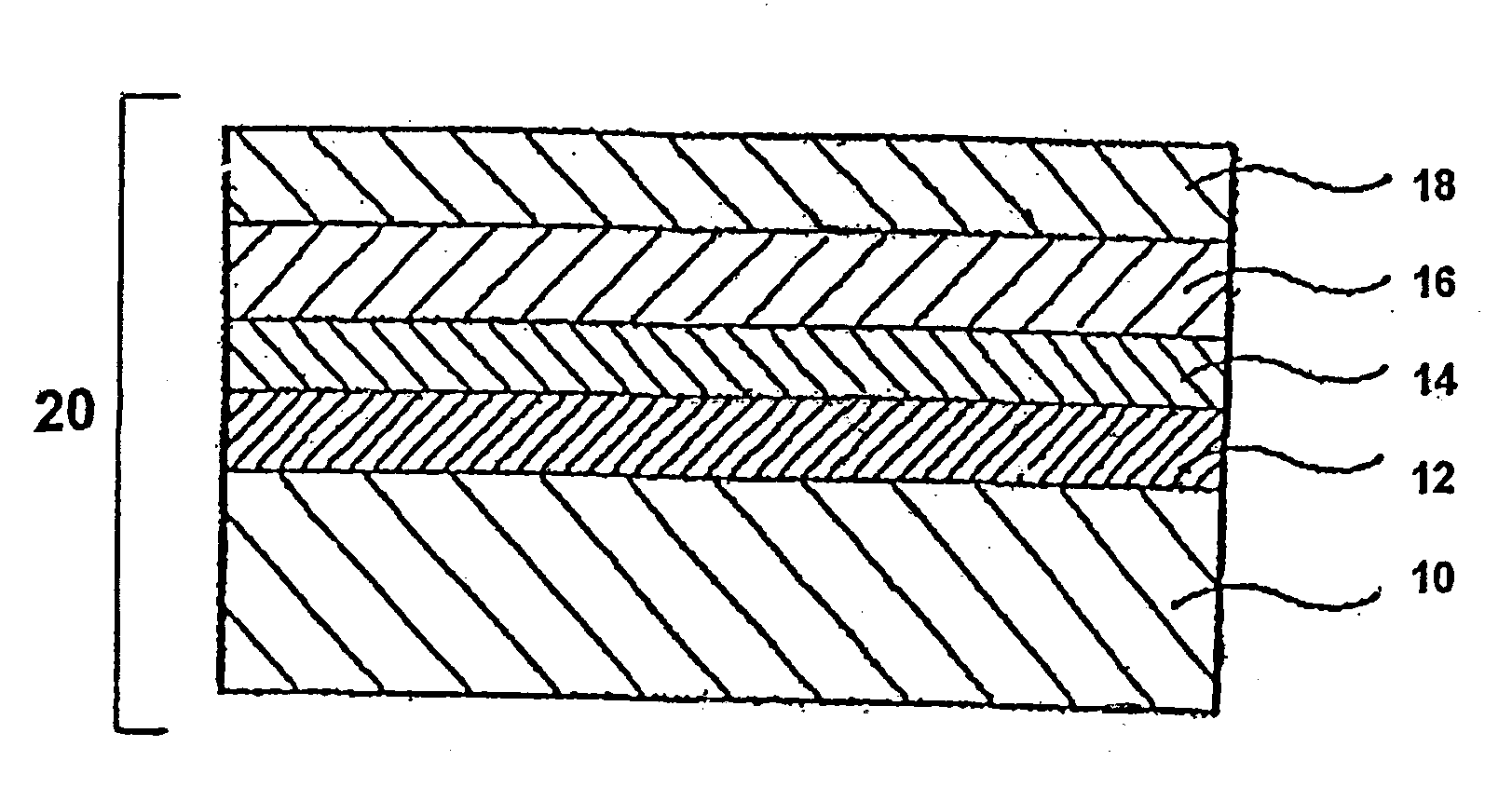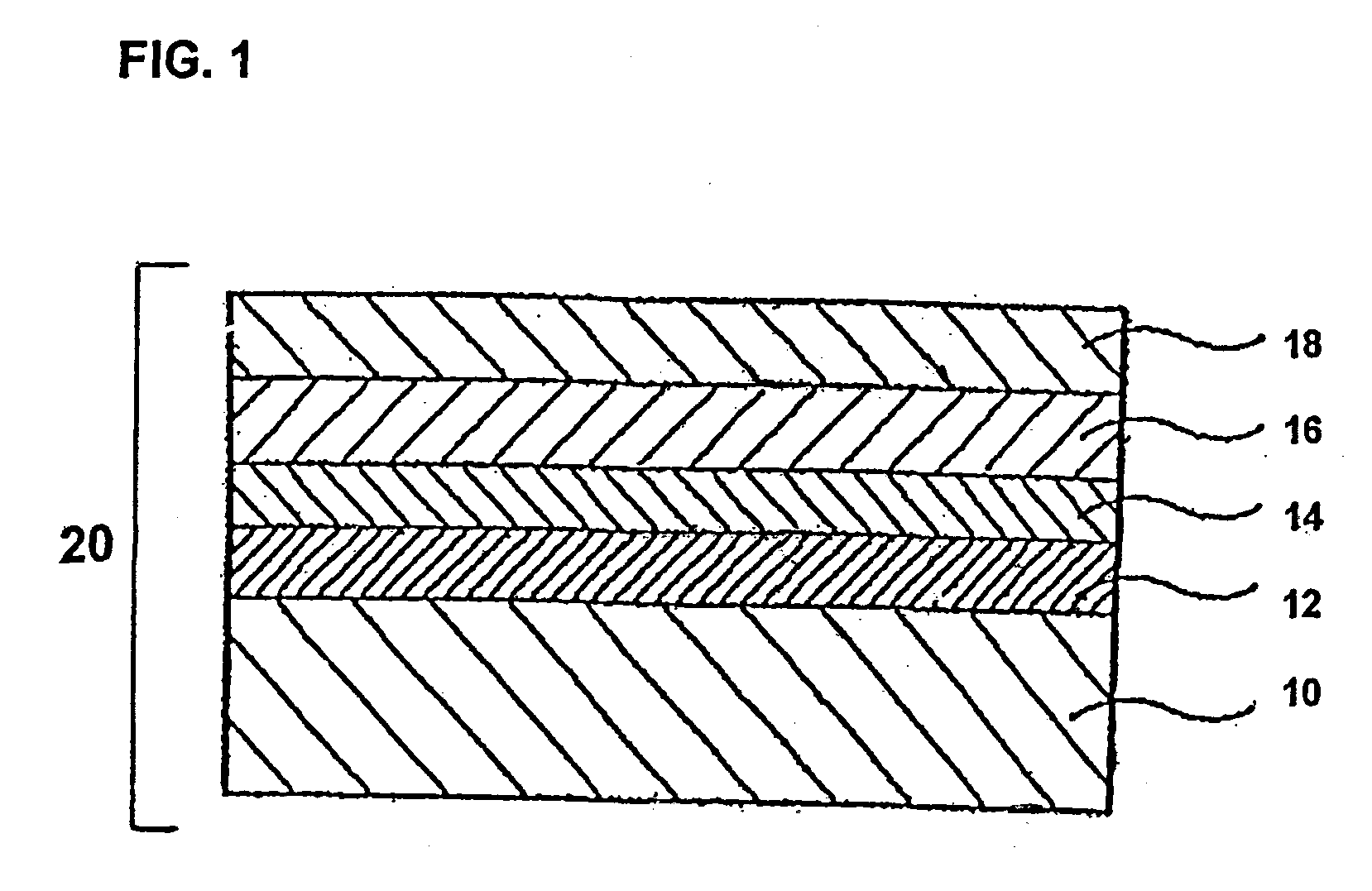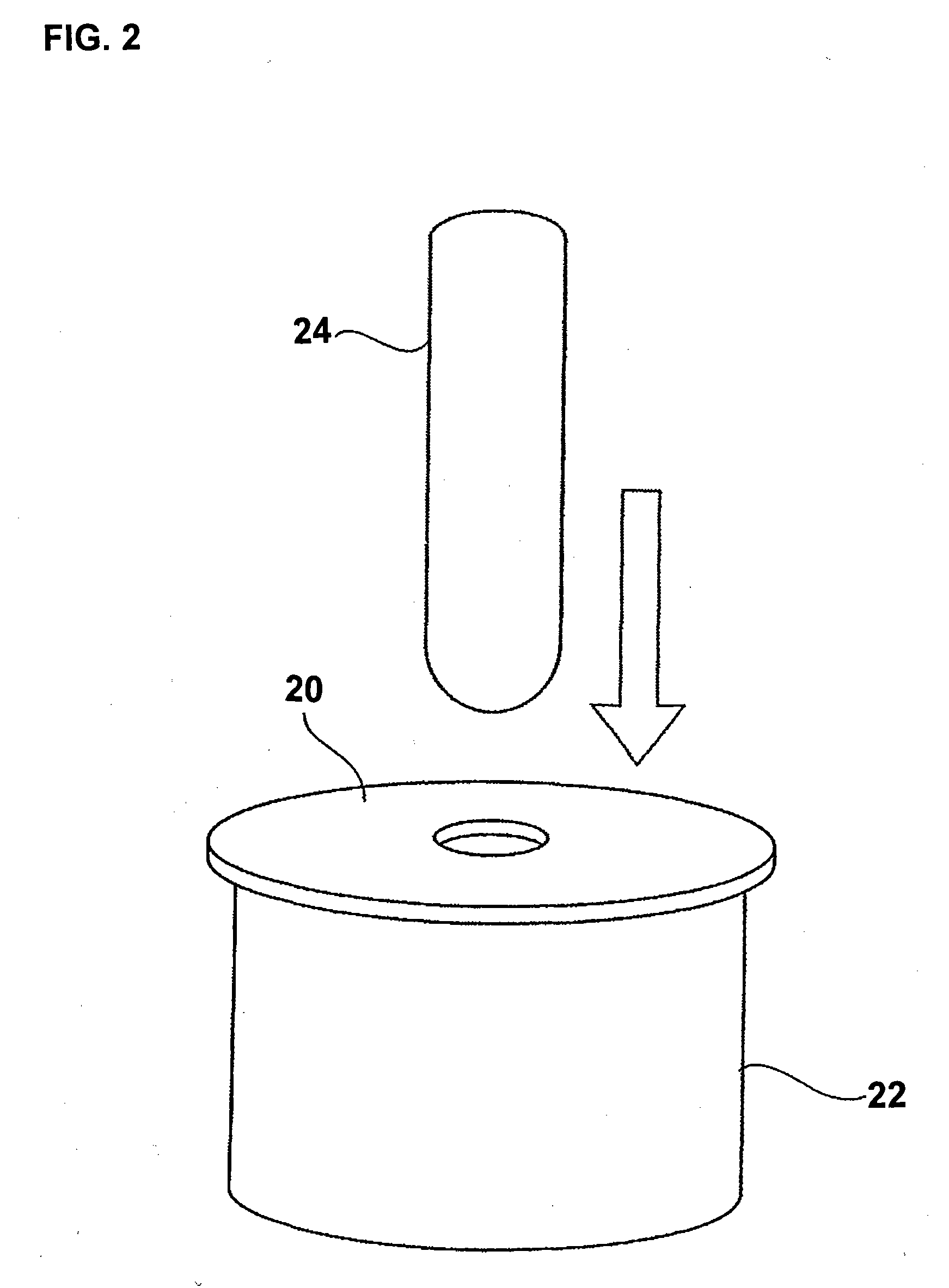Method of manufacture of glass substrate for information recording medium, method of manufacture of magnetic recording disk, and magnetic recording disk
- Summary
- Abstract
- Description
- Claims
- Application Information
AI Technical Summary
Benefits of technology
Problems solved by technology
Method used
Image
Examples
embodiment 1
[0047]Donut-shaped glass disc plates (chamfered, lapped and polished), of outer diameter 65 mm, inner diameter 20 mm, and thickness approximately 0.64 mm, of glass comprising 60 weight percent SiO2, 15 weight percent Al2O3, 7 weight percent Li2O, 8 weight percent Na2O, and 10 weight percent ZrO2, were prepared. The glass plates were immersed for 5 minutes in a hydrofluoric acid aqueous solution containing 5 weight percent hydrofluoric acid, to perform etching to a depth of approximately 10 μm. Then, coarse polishing of approximately 20 μm of the glass plates was performed using cerium oxide abrasive with an average particle diameter of 2.5 μm. Colloidal silica with an average particle diameter of 0.1 μm was used in finishing of approximately 1 μm. After precision cleaning of these glass plates, the plates were placed in an aqueous solution of 50 weight percent lithium nitrate, and heated to 120° C. for one hour.
[0048](Film Deposition Process)
[0049]On glass plates subjected to the ab...
embodiment 2
[0050]Donut-shaped glass disc plates (chamfered, lapped and polished), of outer diameter 65 mm, inner diameter 20 mm, and thickness approximately 0.64 mm, of glass comprising 65 weight percent SiO2, 5 weight percent Al2O3, 10 weight percent Li2O, 5 weight percent Na2O, 5 weight percent K2O, and 10 weight percent ZrO2, were prepared. The glass plates were immersed for 15 minutes in an ammonium fluoride aqueous solution containing 40 weight percent ammonium fluoride, to perform etching to a depth of approximately 5 μm. Then, coarse polishing of approximately 20 μm of the glass plates was performed using cerium oxide abrasive with an average particle diameter of 2.5 μm. Colloidal silica with an average particle diameter of 0.1 μm was used in finishing of approximately 1 μm. After precision cleaning of these glass plates, the plates were placed in an aqueous solution of 65 weight percent lithium sulfate, and heated to 150° C. for one hour. Film deposition processes similar to those of E...
embodiment 3
[0051]Donut-shaped glass disc plates (chamfered, lapped and polished), of outer diameter 65 mm, inner diameter 20 mm, and thickness approximately 0.64 mm, of glass comprising 65 weight percent SiO2, 10 weight percent Al2O3, 7 weight percent Li2O, 8 weight percent Na2O, and 10 weight percent ZrO2, were prepared. The glass plates were immersed for 120 minutes in a sodium hydroxide aqueous solution containing 10 weight percent sodium hydroxide, to perform etching to a depth of approximately 1 μm. Then, coarse polishing of approximately 20 μm of the glass plates was performed using cerium oxide abrasive with an average particle diameter of 2.5 μm. Colloidal silica with an average particle diameter of 0.1 μm was used in finishing of approximately 1 μm. After precision cleaning of these glass plates, the plates were placed in an aqueous solution of 80 weight percent lithium nitrate, and heated to 180° C. for one hour. Film deposition processes similar to those of Embodiment 1 were perform...
PUM
| Property | Measurement | Unit |
|---|---|---|
| Temperature | aaaaa | aaaaa |
| Temperature | aaaaa | aaaaa |
| Percent by mass | aaaaa | aaaaa |
Abstract
Description
Claims
Application Information
 Login to View More
Login to View More - R&D
- Intellectual Property
- Life Sciences
- Materials
- Tech Scout
- Unparalleled Data Quality
- Higher Quality Content
- 60% Fewer Hallucinations
Browse by: Latest US Patents, China's latest patents, Technical Efficacy Thesaurus, Application Domain, Technology Topic, Popular Technical Reports.
© 2025 PatSnap. All rights reserved.Legal|Privacy policy|Modern Slavery Act Transparency Statement|Sitemap|About US| Contact US: help@patsnap.com



